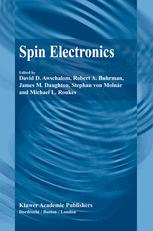

Most ebook files are in PDF format, so you can easily read them using various software such as Foxit Reader or directly on the Google Chrome browser.
Some ebook files are released by publishers in other formats such as .awz, .mobi, .epub, .fb2, etc. You may need to install specific software to read these formats on mobile/PC, such as Calibre.
Please read the tutorial at this link: https://ebookbell.com/faq
We offer FREE conversion to the popular formats you request; however, this may take some time. Therefore, right after payment, please email us, and we will try to provide the service as quickly as possible.
For some exceptional file formats or broken links (if any), please refrain from opening any disputes. Instead, email us first, and we will try to assist within a maximum of 6 hours.
EbookBell Team

4.7
106 reviewsThe history of scientific research and technological development is replete with examples of breakthroughs that have advanced the frontiers of knowledge, but seldom does it record events that constitute paradigm shifts in broad areas of intellectual pursuit. One notable exception, however, is that of spin electronics (also called spintronics, magnetoelectronics or magnetronics), wherein information is carried by electron spin in addition to, or in place of, electron charge. It is now well established in scientific and engineering communities that Moore's Law, having been an excellent predictor of integrated circuit density and computer performance since the 1970s, now faces great challenges as the scale of electronic devices has been reduced to the level where quantum effects become significant factors in device operation. Electron spin is one such effect that offers the opportunity to continue the gains predicted by Moore's Law, by taking advantage of the confluence of magnetics and semiconductor electronics in the newly emerging discipline of spin electronics. From a fundamental viewpoine, spin-polarization transport in a material occurs when there is an imbalance of spin populations at the Fermi energy. In ferromagnetic metals this imbalance results from a shift in the energy states available to spin-up and spin-down electrons. In practical applications, a ferromagnetic metal may be used as a source of spin-polarized electronics to be injected into a semiconductor, a superconductor or a normal metal, or to tunnel through an insulating barrier.